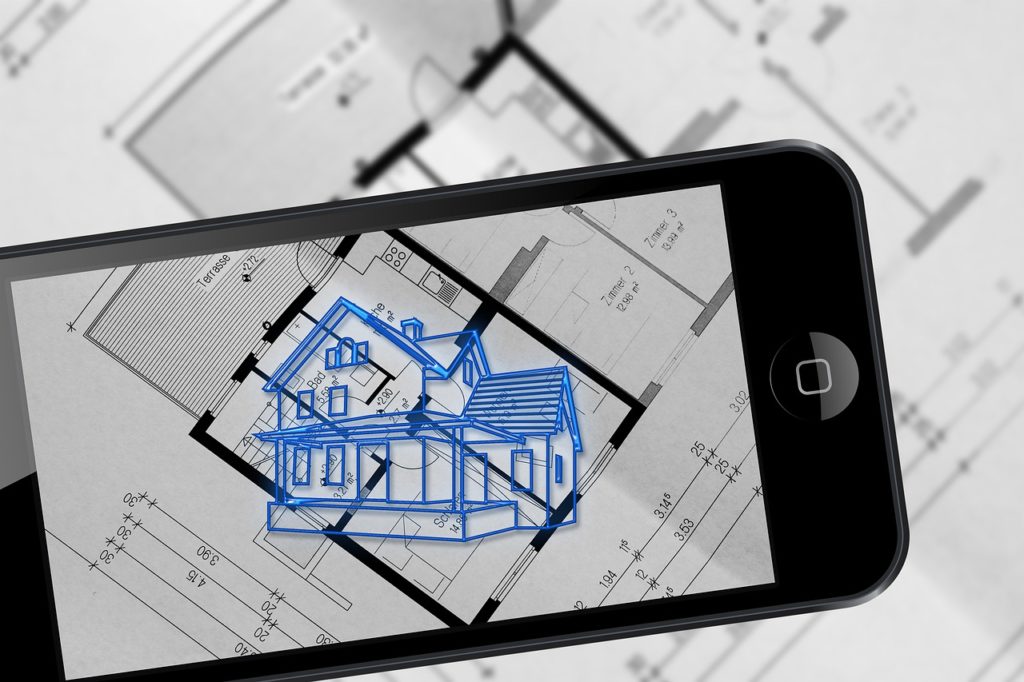In an increasingly technologically based world, it’s no wonder that virtual reality technologies are beginning to make a mark. But there’s another version of virtual reality that is making waves in its own right. Although not as immersive as virtual reality, its close cousin, “augmented reality,” is already becoming a regular part of our daily lives in a number of important ways. The year 2019 was one of record growth for augmented reality as an industry. By May 2019, users with AR-supported mobile devices reached 1.5 billion. Businesses in all areas are finding new ways to incorporate augmented reality technology into their everyday activities. Augmented reality technologies are expected to continue to grow over the course of the next several years. Here are a few trends that you can expect to see gaining a foothold on the augmented reality scene—and particularly in the business world—in the next few years.
Shopping with Augmented Reality
One of the ways in which augmented reality has begun to infiltrate our world is with its applications in the retail world. Retailers have already begun incorporating augmented reality technology into their applications to allow for a brand-new way of shopping. As mobile devices have steadily become more sophisticated, looking more than ever like small and portable computers, shopping with mobile devices and apps has become the norm. BRP’s Digital Commerce Survey in 2018 showed that around 50% of consumers said they would be more likely to shop with a retailer that offered either virtual or augmented reality technologies. Despite this statistic, only around 15% of retailers are using these types of technology to enhance the shopping experience, with approximately 32% noting that they might deploy augmented reality technologies in the next several years.
Of the retailers using augmented reality now, how does the technology enhance the experience? Much of the available augmented reality technologies for retailers involve enhancements when shopping with mobile devices. Big-name retailers such as IKEA allow you to see what products will look like in your home before purchasing them. Just choose your item and point the camera at the room around you, and you can see exactly how that new couch might look in your space. Clothing retailers such as American Apparel, Lacoste, and Uniqlo have created virtual dressing rooms that allow you to try on clothes in augmented reality, as well. And in other places, augmented reality is making its way into actual brick-and-mortar stores, with in-store smart mirrors that can scan RFID tags and offer suggestions to customers.
AR-Equipped Headsets
Augmented reality is gaining ground on the business side of operations rather than on the consumer side, in part due to the cost of implementing some of this technology. One of the ways that AR is entering business operations is through the use of headsets equipped with augmented reality technology. Employees at a variety of businesses can use smart glasses and headsets with augmented reality to improve productivity, reduce mistakes, and implement training for new employees. With AR overlays, employees can minimize errors by having an overlay that can watch their work and stop mistakes before they occur. Many workplaces have already begun to incorporate new and more engaging training methods into their programming, such as creating game-like scenarios for workers when they go through the training process. By integrating AR technology into training, employees can use mixed-reality environments to locate safety and compliance errors in a more direct and engaging way.
AR in Health Care
Moreover, AR headsets used in the health care sector, particularly in surgery situations, can help doctors to avoid errors. Wearing a lightweight AR headset can provide information about a procedure and feedback on patient vital signs directly to a physician in order to help prevent medical errors. The AR technology can also alert physicians performing surgeries, both in actual practice and in training, about potential risks and other hazards before mistakes are made. There are other AR technologies in the works to help patients locate a defibrillator nearby if they need one, as well as technology to help nurses find veins when drawing blood or inserting an IV. These uses of AR technology in health care are designed to improve the patient experience and may even help to reduce overall costs. Experts believe that these benefits will help to drive the value of the augmented reality market as it relates to health care, with an expected increase of around 38% each year until about 2025.
New Horizons with 5G
As 5G hovers on the horizon, virtual and augmented reality technologies are likely to receive a boost. Look to see even more of these technologies implemented in the next few years as 5G gets off the ground. The increased data transfer speeds mean that these technologies will continue to become more affordable and accessible in the future.

